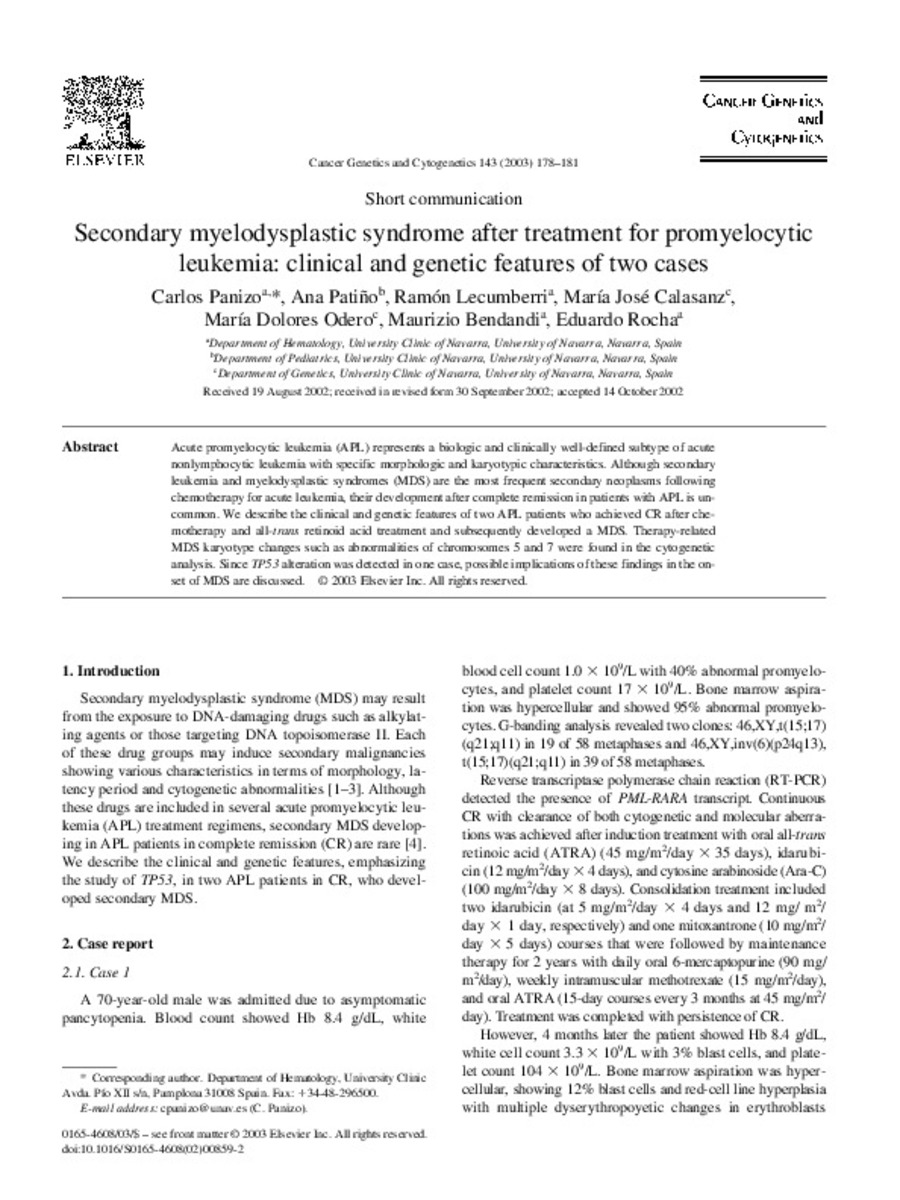Secondary myelodysplastic syndrome after treatment for promyelocytic leukemia: clinical and genetic features of two cases
Keywords:
Leukemia, Promyelocytic, Acute/complications/drug therapy/genetics
Myelodysplastic Syndromes/complications/genetics/pathology
Citation:
Panizo C, Patiño A, Lecumberri R, Calasanz MJ, Odero MD, Bendandi M, et al. Secondary myelodysplastic syndrome after treatment for promyelocytic leukemia: clinical and genetic features of two cases. Cancer Genet Cytogenet 2003 Jun;143(2):178-181.
Statistics and impact
0 citas en

0 citas en

Items in Dadun are protected by copyright, with all rights reserved, unless otherwise indicated.









